by Marley Heltai // May 24, 2024
This article is part of our feature topic Habitat.
Alexandra Pirici’s latest exhibition, ‘Attune,’ transforms the historic hall of Hamburger Bahnhof into a vibrant landscape where human and non-human entities come together in a celebration of interconnectedness. Through a combination of dance, choral singing and sculptural elements, Pirici explores the ways in which living beings and their surroundings resonate and interact, learning from each other’s complex structures and systems. Pirici incorporates organic and inorganic material into the installation and performance, crafting a show that examines the ways in which we organize ourselves within our environment. She not only observes the way human beings structure themselves, but also analyzes self-organizing matter on a much smaller scale, through a variety of other materials, like sand, agate stones and chemical processes. Addressing the exchange between individuals and their habitat, Pirici’s site-specific installation considers the concepts of self-structuring and self-organization within nature and human society alike.
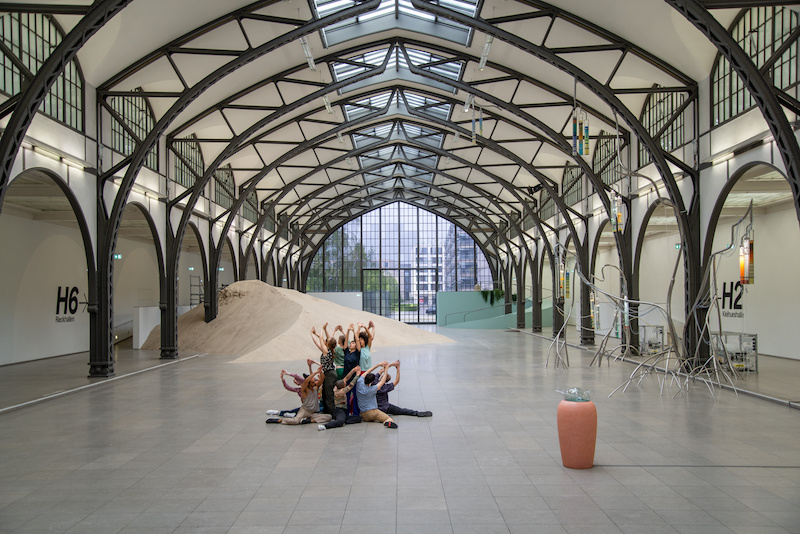
Alexandra Pirici: Attune, 2024 // Courtesy of the artist and Audemars Piguet
The centerpiece of ‘Attune’ is a giant sand dune, which pours into the center of the room as though it had just been swept into place by a forceful gust of wind. On the other side of the hall, there’s a spindly silver structure that resembles a massive metal tree. Long vines extend like branches in every direction. Hanging from these silver vines are large glass cylinders filled with luminescent liquids–gradient blues and bubbling oranges. With its sprawling stature and organic form, the sculpture, which Pirici refers to as ‘the Organ,’ resembles a giant assortment of branches cast in silver.
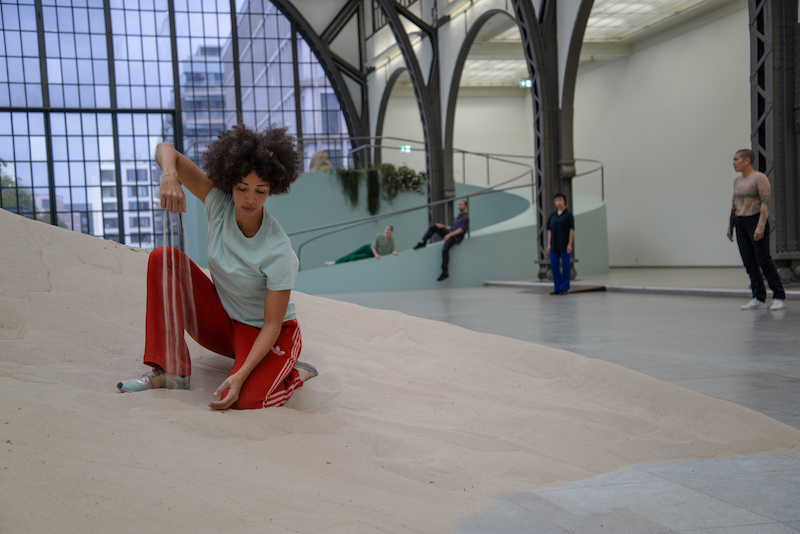
Alexandra Pirici: Attune, 2024 // Courtesy of the artist and Audemars Piguet
As I examined the various experiments, I glanced around the room, curious as to why there were no performers to be seen, despite having been informed that a live performance was to begin in the next couple of minutes. All I could see were fellow museum visitors, observing the various glass tubes and vials just as I was. As I was reading a wall text about the discovery of Bénard cells, a woman just a couple meters away opened her mouth and sang a long, low note. I turned around just in time to see a man on the other side of the room begin to make his way to the center, also singing. Soon, all the unsuspecting visitors seemed to transform into performers. From seemingly every corner of the vast hall, people made their way to the center of the room, their voices converging in a polyphonic chorus. From atop the sand dune, one performer began to roll down slowly–her body turning rhythmically until she reached the ground where she continued to roll. Slowly, I stepped back, suddenly keenly aware of my own position within the room. I watched in admiration as the performers danced and sang with grace and purpose, holding eye contact with the audience and moving up and down the hall with the casual ease of someone wandering throughout their own home.
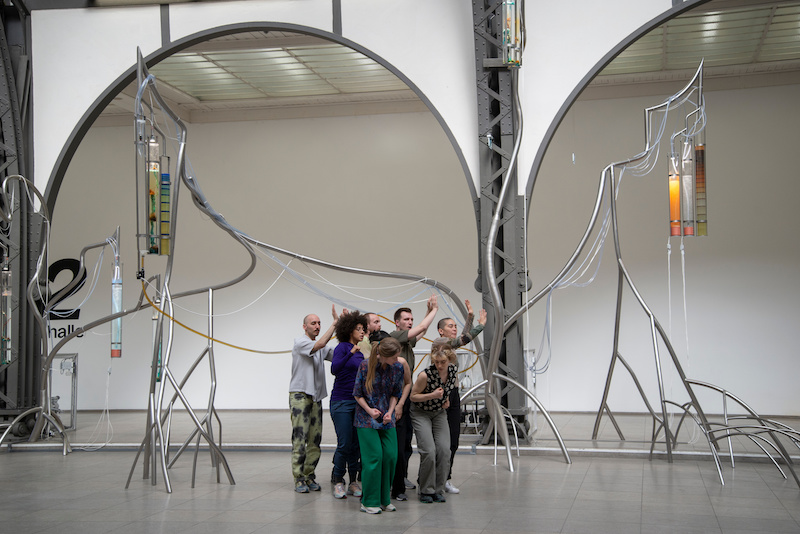
Alexandra Pirici: Attune, 2024 // Courtesy of the artist and Audemars Piguet
The performers began reciting poetry in rounds and moving their bodies in unison to mimic the motion of a wave. Gradually, as the performance continued, the audience rose from their seats on the floor and the museum’s benches to reintegrate back into the exhibition. As I observed the chemical gardens contained in glass vials, the performers continued to move throughout the space, all of us coexisting symbiotically. The soothing voices had an almost religious sound to them–reminiscent of a medieval church choir, ringing out expansively in the vastness of the hall. Inspired by Corsican and Georgian folk songs, the musical compositions of ‘Attune’ force us to quite literally attune to our environment and be present with the all of the disparate artistic components simultaneously taking place. The asynchronous rounds make it difficult for a modern ear to concentrate, as we are used to hearing one voice at a time—it’s received as a pointed allusion to the highly individualistic world we live in today. The songs seem to nod to a time period that was more community oriented; a lost communal ritual that ‘Attune’ seeks to re-ignite.
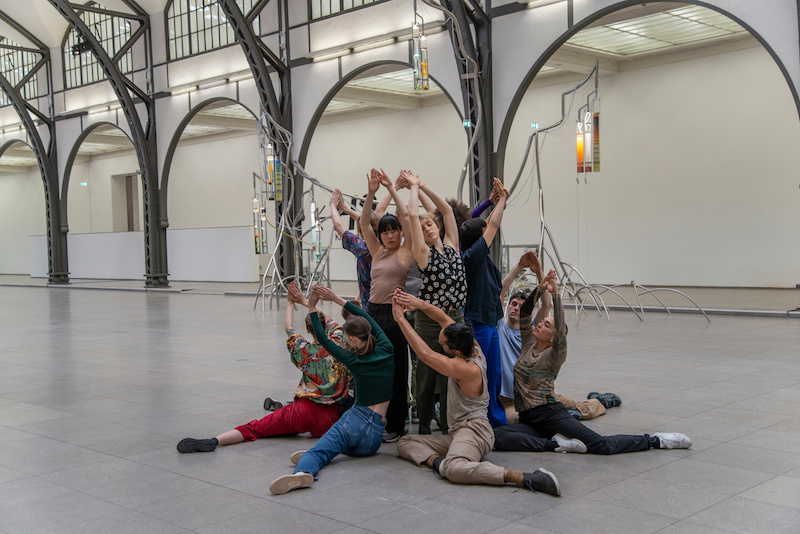
Alexandra Pirici: Attune, 2024 // Courtesy of the artist and Audemars Piguet
In front of me is a small terracotta platform upon which a glass dome with two openings sits. Emerging from one of the openings is a long plastic stick, which visitors are encouraged to use to stir the liquid inside, in order to create a reordering of convection cells. As I played with the plastic stick (which resembled a science fair project rather than a contemporary art piece), the performers floated around me. While their voices blended together harmoniously, their bodies separated and came together in organic and unexpected movements, much like the convection cells in the glass before me.
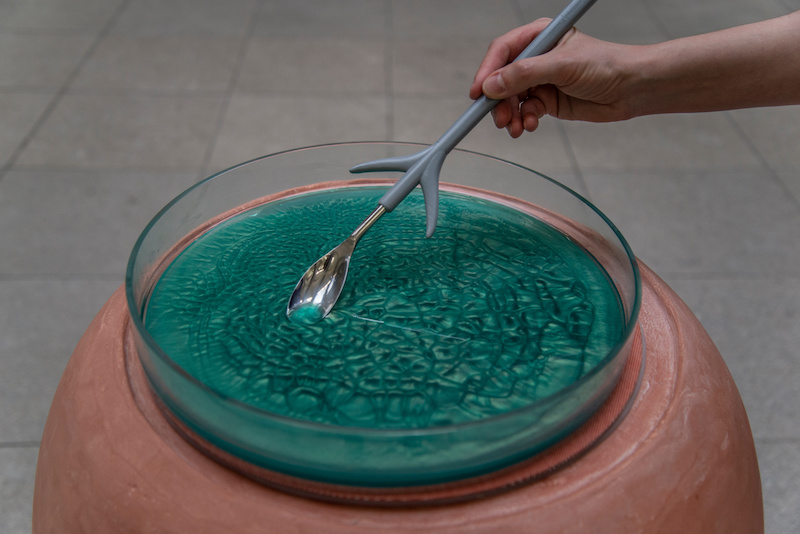
Alexandra Pirici: Attune, 2024 // Courtesy of the artist and Audemars Piguet
At one point, a performer references an Ursula K. Le Guin poem about a stone. I’m reminded of Le Guin’s ‘The Ones Who Walk Away from Omelas,’ a classic dystopian narrative that explores the existential and moral dilemmas individuals face within their societal constructs. Pirici’s installation, much like Le Guin’s writings, prompts us to consider how our presence and actions influence the habitats we live in and how, in turn, they influence us. The many cultural references embedded in ‘Attune’ urge us to reflect on the interconnectedness of all aspects of our environment, whether organic or inorganic matter.
After a while, I began to grow a bit dizzy from all the unexpected movement and took a seat on one of the benches. While the intersection of performance art, science and sculpture is unusual and thus presents a captivating show, there are also many references and cultural allusions at play that aren’t immediately accessible. On an aesthetic level, the performance is both enchanting and engaging, but only upon reading how Pirici drew inspiration from the latest developments in chemistry and physics in order to reconsider our preconceived notions of what it means to be alive, did I feel like I truly understood all the artistic components that comprised the show.
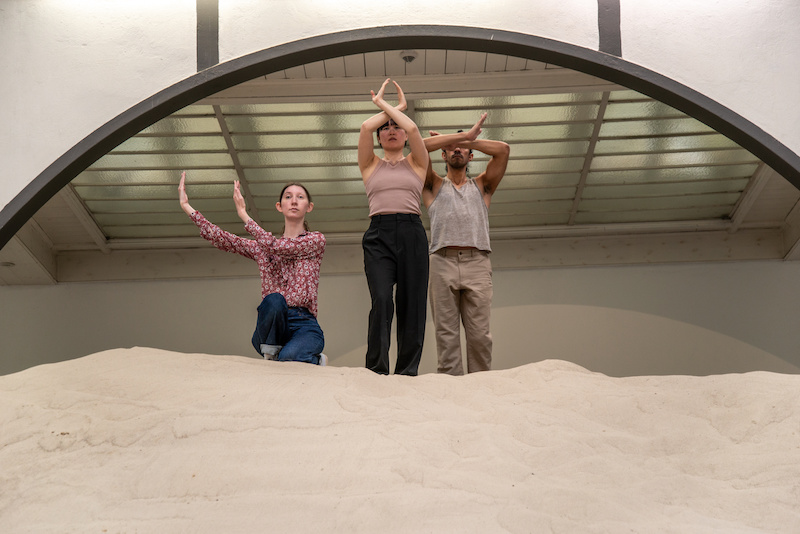
Alexandra Pirici: Attune, 2024 // Courtesy of the artist and Audemars Piguet
Through her exhibition—the live action as well as the installation itself—Pirici strives to reveal the often unacknowledged agency of all matter, whether living or nonliving, in shaping the world around us. The intersection between the seemingly divergent fields of art and science in ‘Attune’ challenges us to rethink the way we engage with the world and with each other, subtly inviting us to consider a more harmonious coexistence.
Exhibition Info
Hamburger Bahnhof
Alexandra Pirici: ‘Attune’
Exhibition: Apr. 25–Oct. 6, 2024
smb.museum
Invalidenstraße 50, 10557 Berlin, click here for map





















